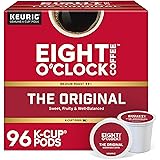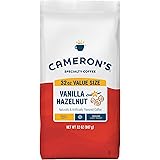Mastering the Moka Pot: Brew Delicious Coffee at Home
There is a certain charm to the Moka Pot, a classic coffee maker that has graced countless kitchens around the world. It often evokes memories of tiny Parisian apartments or bustling Italian cafes, where the aroma of rich coffee would fill the air. However, for many, this beloved gadget has proven to be a source of frustration, often yielding a cup that is disappointingly bitter. The good news is that with a few expert tips, this perception can be entirely transformed, allowing for the creation of truly delicious coffee.
In the video above, renowned coffee expert James Hoffmann guides us through the nuances of brewing with a Moka Pot. He explains how this seemingly simple device, often dismissed after a single unpleasant experience, is actually quite underrated. Its unique brewing style creates a coffee that can be described as a delightful halfway house between the intensity of espresso and the smoothness of drip coffee. Learning the proper technique is key to unlocking its full potential, ensuring a consistently enjoyable brew.
Why the Moka Pot is Often Misunderstood
The Moka Pot’s mixed reputation largely stems from its tendency to produce bitter coffee when not used correctly. This widespread issue leads many to abandon it after just one or two attempts, mistakenly blaming the device itself. While it might seem straightforward, there are subtle yet crucial details in the brewing process that significantly impact the final taste. Understanding these common pitfalls allows for easy correction, transforming a once-dreaded brew into a cherished ritual.
Many users are unaware that the Moka Pot operates on a pressure-based system, which requires careful management of heat and extraction time. If the coffee is over-extracted, or if stale residue contaminates the brew, bitterness becomes inevitable. By addressing these core issues, the Moka Pot’s true capabilities are revealed, showcasing its capacity to brew a rich, flavorful, and incredibly satisfying cup of coffee every time. It is a tool that, once mastered, becomes an invaluable asset to any home barista.
The Foundation: Coffee Grind and Quality
As with all coffee brewing techniques, the grind size of the coffee beans is paramount to achieving a quality extraction. For a Moka Pot, this step is often where the first significant mistake is made, leading directly to bitterness. Unlike the super-fine, powdery grind required for an espresso machine, a Moka Pot demands a slightly coarser texture, often likened to granulated sugar or fine sand rather than table salt.
If the grind is too fine, the water struggles to pass through the coffee bed, leading to excessive pressure buildup and over-extraction, resulting in a harsh, bitter taste. Conversely, a grind that is too coarse allows water to pass too quickly, producing a weak and under-extracted coffee. Achieving the correct grind ensures optimal contact time between water and coffee, allowing for the extraction of desirable flavors without the unpleasant bitterness. After grinding, the coffee should be gently filled into the basket, simply leveled off without any tamping, to maintain proper water flow.
Beyond the Beans: Moka Pot Maintenance
Maintaining the cleanliness of your Moka Pot is another critical factor often overlooked, yet it profoundly impacts the taste of your coffee. There is a common misconception that a buildup of old coffee residues somehow “seasons” the pot, contributing to a better flavor. In reality, this stale, rancid coffee oil contributes a significant amount of bitterness and off-flavors to each new brew, compromising the fresh coffee.
Regular cleaning is essential to prevent these residues from accumulating, ensuring that only the fresh coffee’s flavors are extracted. Furthermore, attention must be paid to the rubber gasket, a small but vital component that ensures a proper seal. This gasket should always be kept clean to maintain its sealing integrity. When storing the Moka Pot, it is advised to leave it disassembled or loosely put together, as storing it tightly sealed can prematurely age and compress the rubber, affecting its ability to create a proper seal over time.
The Brewing Process: Heat and Pressure
One of the most impactful adjustments for improving Moka Pot coffee involves the temperature of the water used at the start. It is common practice for many to fill the Moka Pot with cold water, which is then heated on the stove. However, this extended heating period for the water also causes the coffee grounds in the filter basket to heat up prematurely.
This pre-heating of the coffee can lead to an early and uneven extraction, contributing significantly to a bitter taste. Instead, the bottom chamber should be filled with hot water, preferably from a kettle, ensuring it is just below the safety valve. By starting with hot water, the time the coffee spends in contact with heat before brewing begins is minimized. This allows for a quicker, more controlled extraction once pressure builds, resulting in a cleaner and less bitter cup.
Once the Moka Pot is assembled tightly—using a towel as the base will be hot—it should be placed on a burner. The hot water in the bottom chamber will quickly generate steam, creating pressure that pushes the water up through the funnel and through the coffee grounds. As the coffee begins to flow into the upper chamber, a beautiful stream will be observed. The crucial moment to stop the brewing is when a distinct gurgling sound is heard, signaling that steam is pushing through the coffee bed instead of water. At this point, the pot should be immediately removed from the heat and cooled under a cold tap to halt the extraction process, preventing further bitterness.
Elevating Your Moka Pot Experience: Beyond Black Coffee
The beauty of the Moka Pot is not limited to producing a fantastic cup of black coffee; its concentrated brew serves as an excellent base for a variety of coffee drinks. One popular application is the creation of a delicious Moka Pot latte, bringing a touch of cafe-style luxury into the home. This is easily achieved by frothing milk separately and combining it with your freshly brewed Moka Pot coffee.
A French press, commonly found in many kitchens, is an ideal tool for frothing milk. By heating milk gently in a saucepan or microwave, then pouring it into a French press and vigorously pumping the plunger, a rich, velvety foam can be created. The resulting frothed milk can then be poured over the Moka Pot coffee, creating a beautiful and flavorful latte. Experimentation with different types of milk, such as oat or almond milk, can further customize the experience, opening up a whole array of delicious Moka Pot-based drinks.
In essence, the Moka Pot is an incredibly flexible and often underrated brewing device. When quality coffee is used, and the correct techniques are applied, a truly delicious drink is produced. With the addition of a simple French press for frothing, a wide array of delightful coffee concoctions, such as lattes and cappuccinos, are made easily accessible. So, it is highly encouraged to revisit this classic gadget, experiment with its potential, and discover the rich, flavorful coffee it is capable of brewing.







